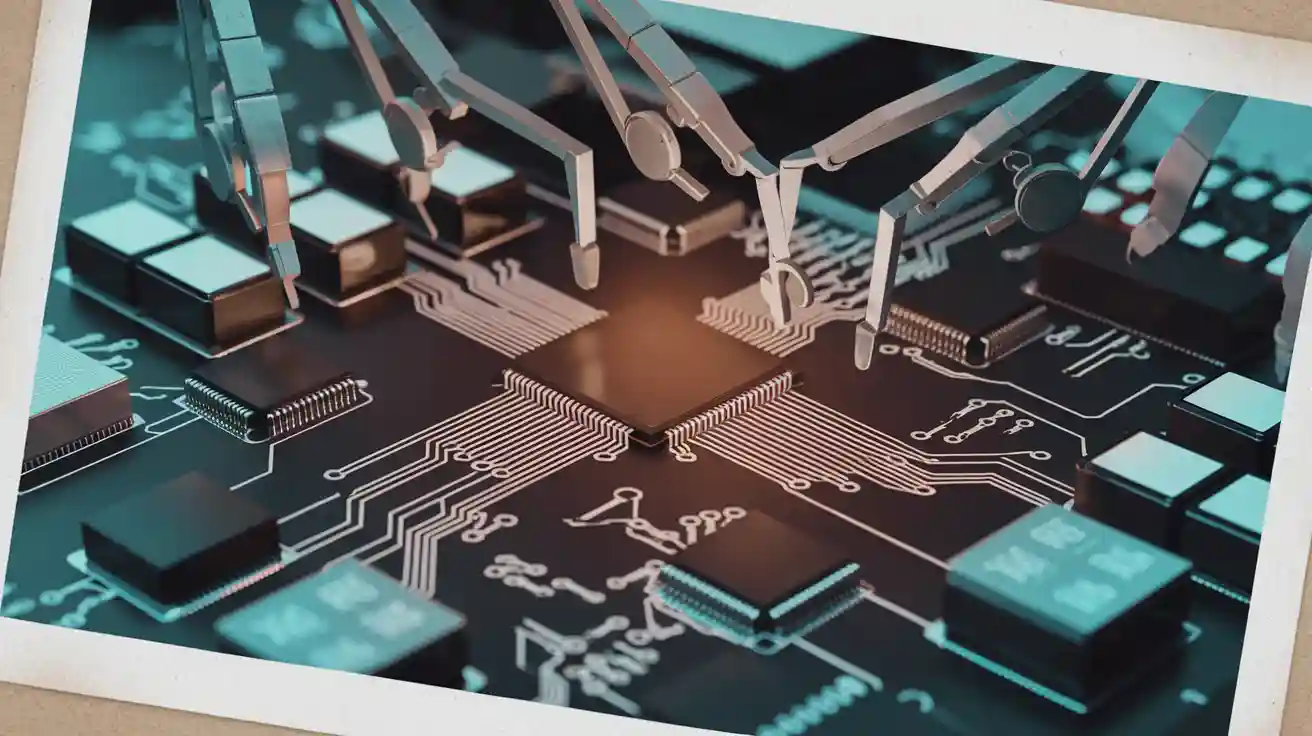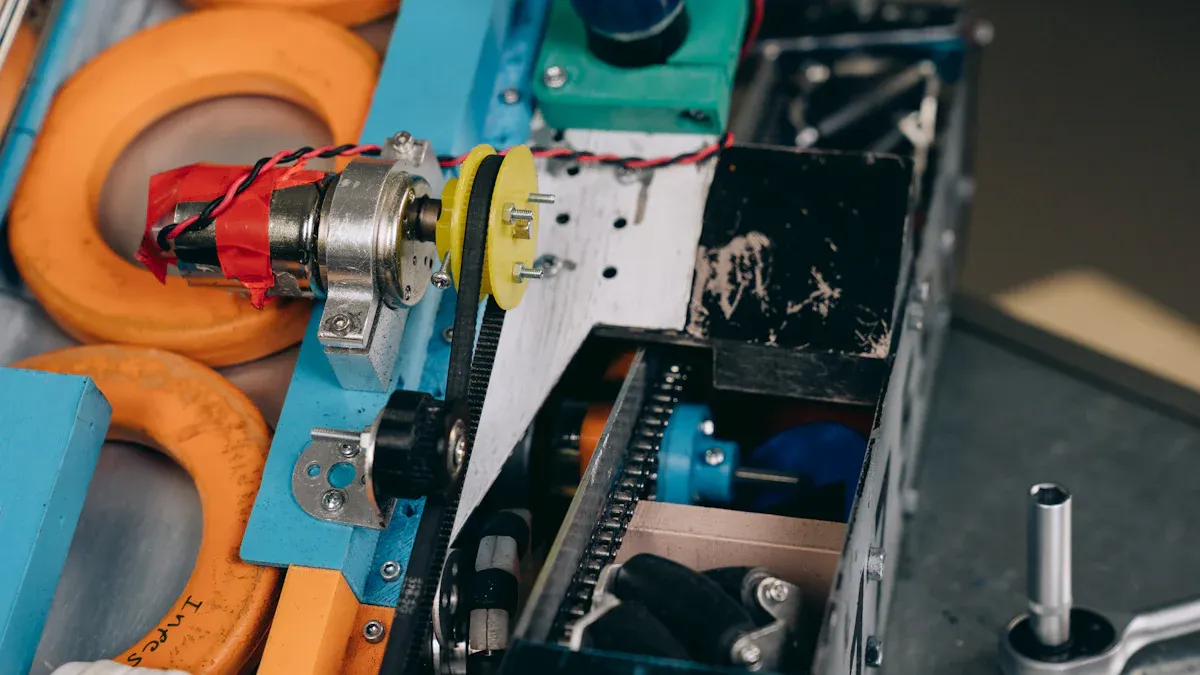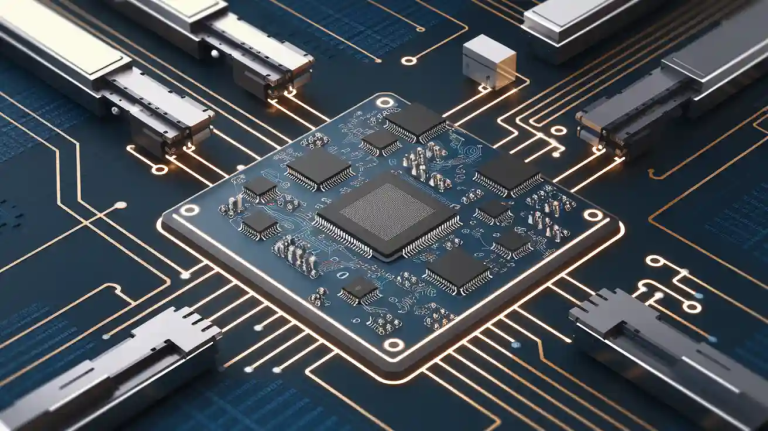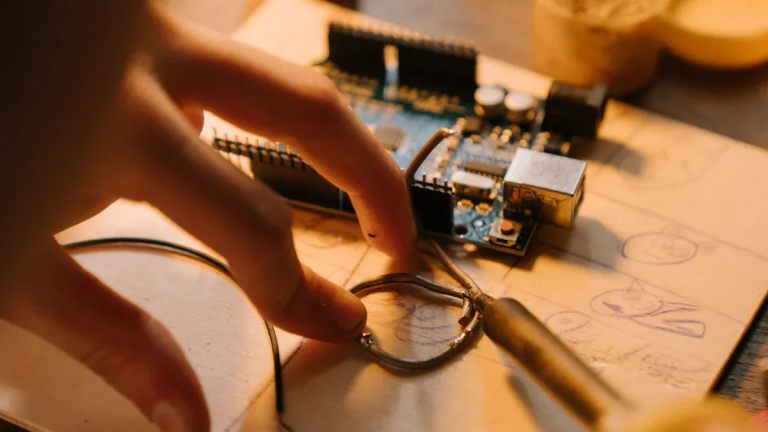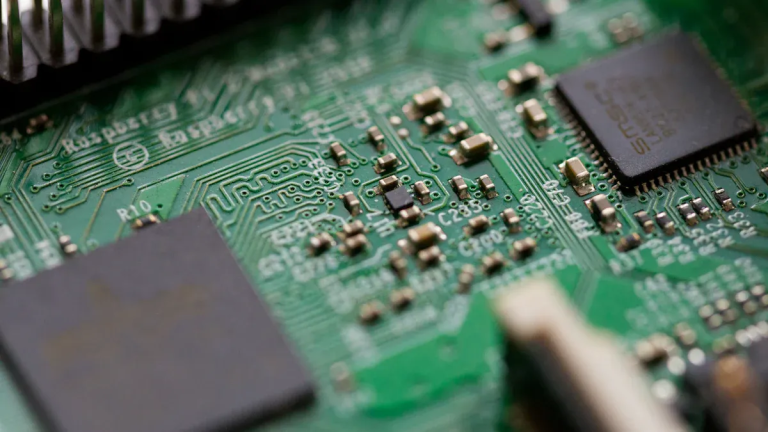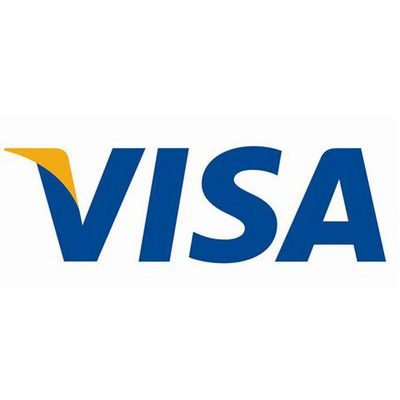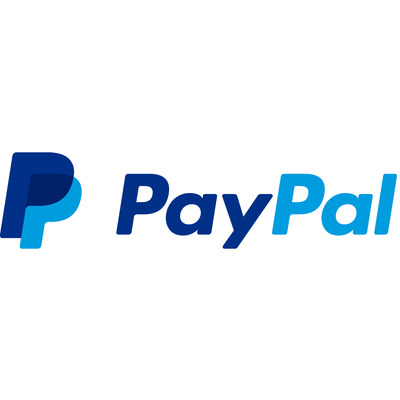When it comes to manufacturing, understanding PCBA OEM and ODM can help you make smarter decisions. PCBA OEM (Original Equipment Manufacturer) focuses on producing circuit boards based on your designs, giving you full control over the product. On the other hand, ODM (Original Design Manufacturer) creates products using their own designs, offering you a faster path to market. Choosing the right model isn’t just a technical decision—it’s a strategic one. The wrong choice can slow your growth, while the right one can boost efficiency and profitability. Which one fits your business needs best?
Key Takeaways
- PCBA OEM lets you design products your way. You own the ideas.
- PCBA ODM gives ready-made designs for quicker and cheaper production.
- Think about your needs to pick OEM or ODM. Check design, cost, and market needs.
- Keep your ideas safe by choosing honest makers and checking contracts.
- Match your manufacturing plan with your future goals for better growth.
What is PCBA OEM?
Definition of PCBA OEM
PCBA OEM refers to a manufacturing model where a company produces printed circuit board assemblies (PCBAs) based on your designs and specifications. This approach allows you to retain full control over the product’s design while leveraging the expertise and resources of the manufacturer. OEM services typically include high-quality PCB production, strict quality control measures like 100% automated optical inspection (AOI), and efficient supply chain integration. These services ensure that your product meets industry standards and is delivered on time.
The global PCB market highlights the importance of OEM services. With a projected compound annual growth rate (CAGR) of 4.8% from 2023 to 2026, the market’s output value is expected to reach $101.5 billion by 2026. This growth underscores the increasing demand for reliable and efficient PCBA OEM solutions.
Benefits of PCBA OEM
Choosing PCBA OEM for your manufacturing needs offers several advantages:
- Cost reduction: You save on in-house investments by utilizing the manufacturer’s existing tools and supply chain relationships.
- Improved efficiency: Streamlined production processes minimize errors and keep your projects on schedule.
- Access to expertise: Skilled professionals optimize your designs and ensure compliance with industry standards, enhancing product quality.
- Scalability: OEM services allow you to adjust production volumes based on market demand.
- Faster time to market: Integrated services eliminate bottlenecks, enabling quicker product launches.
Additionally, OEM providers help you navigate challenges like component shortages and geopolitical factors. They implement demand planning, maintain inventory buffers, and offer substitution flexibility, ensuring a resilient supply chain.
Challenges of PCBA OEM
While PCBA OEM offers numerous benefits, it also comes with challenges. One significant issue is employee engagement. Only 25% of manufacturing employees are engaged, which is 8 percentage points lower than the national average for U.S. employees. This disengagement can disrupt defect data feedback processes, negatively impacting product quality and operational efficiency.
Another challenge is maintaining design integrity. Since you provide the design, any errors or oversights in the initial specifications can lead to costly revisions. Additionally, relying on an external manufacturer requires trust in their ability to meet your quality and delivery expectations.
By understanding these challenges, you can take proactive steps to mitigate risks and maximize the benefits of PCBA OEM.
What is PCBA ODM?
Definition of PCBA ODM
A PCBA ODM, or Original Design Manufacturer, is a company that designs and manufactures printed circuit board assemblies (PCBAs) for other businesses. Unlike original equipment manufacturers, ODMs take full responsibility for the product’s design and development. This model allows you to focus on branding and marketing while the ODM handles the technical aspects.
ODMs play a crucial role in the electronics industry. They conduct research and development, perform product testing, and manage manufacturing. This approach is especially beneficial for companies looking to introduce new products quickly and cost-effectively. For instance, partnering with an ODM can help you reduce expenses related to factory operations and leverage local manufacturing advantages.
By collaborating with an original design manufacturer, you can access innovative designs without the need for heavy investment in research and development. This makes ODMs an ideal choice for businesses aiming to innovate while maintaining control over intellectual property.
Benefits of PCBA ODM
Choosing an ODM for your PCBA needs offers several advantages:
- Cost savings: ODMs provide a turnkey solution, managing everything from design to packaging. This eliminates the need for you to invest in expensive R&D or manufacturing facilities.
- Faster market entry: With ready-made designs and streamlined production processes, ODMs help you launch products quickly.
- Access to expertise: ODMs employ skilled professionals who ensure high-quality designs and manufacturing.
- Flexibility: Whether you need a white-label product or a custom design, ODMs can adapt to your requirements.
- Global reach: ODMs often have established networks, enabling you to access international markets with ease.
For example, many ODMs specialize in consumer electronics like phone cases and chargers, offering you a wide range of ready-to-market products.
Challenges of PCBA ODM
While ODMs offer numerous benefits, they also present challenges that you must consider:
| Concern | Description |
|---|---|
| Control over intellectual property | You may worry about losing ownership of your designs when outsourcing. |
| Responsiveness to design changes | ODMs might not adapt quickly to your requested modifications. |
| Capacity commitments | Some ODMs may hesitate to dedicate factory space exclusively to your projects. |
| Component risk | ODMs often avoid taking liability for issues related to component quality. |
These challenges highlight the importance of choosing the right ODM partner. Look for a company with a proven track record, transparent processes, and a commitment to quality. By addressing these concerns proactively, you can maximize the benefits of working with an ODM.
Key Differences Between PCBA OEM and ODM
Design Ownership
When it comes to design ownership, the distinction between PCBA OEM and ODM is clear. With OEM, you retain full control over your product’s design. This means you own the intellectual property and have the freedom to make changes as needed. On the other hand, ODMs typically provide pre-designed products, leaving you with limited or no ownership of the design.
| Aspect | OEM Model | ODM Model |
|---|---|---|
| Design Ownership | Full ownership of design | Limited or no ownership of design |
| Intellectual Property | Full rights to intellectual property | Risks of IP theft and reuse by ODM |
| Product Roadmap Control | Full control over product direction | Limited influence on future changes |
Choosing OEM gives you the power to shape your product’s future. However, if speed and convenience are your priorities, ODM might be a better fit despite the trade-offs in ownership.
Customization and Flexibility
Customization plays a vital role in meeting diverse customer demands. OEM models excel in this area, offering you the ability to tailor every aspect of your product. Whether it’s the PCB layout or component selection, you can create a solution that aligns perfectly with your vision. ODMs, however, focus on pre-designed products, which limits your ability to customize.
| Aspect | Details |
|---|---|
| Customization Demand | Customer demand for PCBA is increasingly diversified across various industries. |
| DeepSeek Technology Impact | Supports fast switching of production lines for small batch and multi-variety orders. |
| Intelligent Design | AI algorithms optimize PCB layout and component selection, reducing design cycle time. |
If your business requires unique solutions or caters to niche markets, OEM is the way to go. But if you need a quick, ready-to-market product, ODM offers a practical alternative.
Cost Considerations
Cost considerations often influence your choice between OEM and ODM. OEM models require higher upfront investment due to design and development costs. However, they provide long-term value by giving you control over the product and its roadmap. ODMs, on the other hand, reduce initial expenses by offering turnkey solutions. While this saves money upfront, it may limit your ability to differentiate your product in the market.
By weighing these cost factors against your business goals, you can determine which model aligns better with your financial strategy.
Time-to-Market
In today’s fast-paced market, getting your product to customers quickly can make or break your success. Time-to-market is a critical factor when deciding between PCBA OEM and ODM models. Each approach offers unique advantages depending on how quickly you need to launch your product.
OEM services often require more time upfront. You provide the design, and the manufacturer follows your specifications. This process ensures complete control over the final product but may delay your launch. If your business operates in a competitive industry, these delays could impact your ability to capture market share.
On the other hand, ODM services excel in speed to market. By offering pre-designed solutions, ODMs eliminate the lengthy design phase. You can focus on branding and marketing while the manufacturer handles production. This approach is ideal if you need to respond quickly to trends or customer demands. For example, consumer electronics companies often rely on ODMs to release new products in record time.
However, you must weigh the trade-offs. While ODMs save time, they may limit your ability to customize the product. If your business requires unique features, the faster timeline might not justify the compromises. OEMs, though slower, give you the flexibility to create a product that aligns perfectly with your vision.
Ultimately, your choice depends on your priorities. Do you value speed or customization? By understanding your goals, you can select the model that aligns with your timeline and business strategy. Remember, time is a resource you can’t afford to waste.
Choosing the Right Model for Your Business
Evaluating Your Business Needs
Selecting the right PCBA manufacturing model starts with understanding your unique requirements. Consider your product goals, market demands, and operational priorities. Are you aiming to create unique products that stand out, or do you need fast market entry to stay competitive? If customization options and design control are critical, an OEM model aligns better with your vision. However, if time and cost savings are your priority, an ODM model offers significant advantages.
To make an informed decision, evaluate key factors that influence manufacturing success. The table below outlines essential criteria to guide your choice:
| Factor | Description |
|---|---|
| Technical Capabilities | Advanced manufacturing technologies and expertise in PCBA processes. |
| Quality & Certifications | Relevant certifications like ISO 9001 and AS9100 that ensure quality standards. |
| Industry Experience | Familiarity with market trends and specific industry needs. |
| Volume Scalability | Flexibility in production capacity to meet varying demands. |
| Lead Time & Turnarounds | Efficiency in production processes reflected in shorter lead times. |
| Pricing Structure | Clear and competitive pricing models that align with budget considerations. |
| Value-added Services | Additional services that enhance the overall manufacturing experience. |
| Responsiveness | Ability to quickly address inquiries and changes during production. |
By assessing these factors, you can identify the model that best supports your business objectives.
Budget and Cost Constraints
Budget plays a pivotal role in your decision-making process. Managing costs effectively ensures profitability while maintaining quality. To optimize your budget, focus on strategies like simplifying designs, optimizing component choices, and planning thoroughly. Clear communication with manufacturers also prevents costly errors during production.
Here are some practical tips to manage costs:
- Simplify the design to reduce complexity.
- Optimize component selection for affordability and availability.
- Utilize Design for Manufacturability (DFM) to streamline production.
- Explore open-source alternatives for cost-effective solutions.
- Partner with reliable manufacturers offering competitive pricing.
The table below illustrates how prototype complexity impacts cost and turnaround time:
| Feature | Simple Prototype | Moderate Complexity Prototype | High Complexity Prototype |
|---|---|---|---|
| Estimated Cost (5 units) | $50 | $300 | $1000 |
| Turnaround Time | 2 days | 5 days | 10 days |
Balancing cost constraints with your manufacturing goals ensures long-term efficiency and profitability.
Importance of Intellectual Property
Protecting intellectual property (IP) is crucial when choosing between OEM and ODM models. With OEM, you retain full ownership of your designs, safeguarding your competitive edge. This control allows you to innovate freely and create unique products that reflect your brand identity. In contrast, ODM models may pose risks to your IP, as manufacturers often retain design rights or reuse them for other clients.
To mitigate risks, prioritize manufacturers with transparent policies and strong reputations. Look for partners who value confidentiality and offer contracts that clearly define IP ownership. By securing your designs, you protect your business from potential disputes and ensure your innovations remain exclusive.
Tip: Always review contracts thoroughly and consult legal experts to safeguard your intellectual property rights.
Choosing the right model depends on your priorities. If IP protection and customization options are essential, OEM is the way to go. For businesses prioritizing time and cost savings, ODM offers a practical alternative.
Aligning with Long-Term Goals
Choosing the right PCBA manufacturing model isn’t just about immediate needs—it’s about setting your business up for long-term success. Your decision should align with your strategic goals, ensuring that every step you take today contributes to sustainable growth tomorrow.
To evaluate how well your choice supports your long-term objectives, focus on key performance indicators (KPIs). These metrics provide a clear picture of how your manufacturing decisions impact your business over time. Consider the following KPIs:
| KPI Type | Description | Target/Standard |
|---|---|---|
| Production Efficiency | Measures the efficiency of PCB production processes. | 96% yield rate |
| Quality Control Metrics | Tracks defect rates to ensure product quality. | Target defect rate reduction |
| Financial KPIs | Evaluates cash flow management and overall financial health. | Revenue growth rate of 15-25% |
| Operational KPIs | Assesses the effectiveness of operational practices and sustainability efforts. | Cost reduction of 10-15% |
| ROI on Technology | Measures the return on investment for new technologies and equipment. | Expected ROI improvement of 20% |
By regularly reviewing these metrics, you can identify areas for improvement and ensure your manufacturing model supports your broader goals. For example, companies that monitor performance metrics often achieve up to a 15% boost in efficiency. Efficient cost controls can also reduce production expenses by 10-15%, freeing up resources for innovation and growth.
Investing in the right technology is another critical factor. Automation, for instance, can enhance production speed and quality while delivering an ROI improvement of around 20%. This not only strengthens your competitive edge but also ensures your business remains agile in a rapidly evolving market.
Tip: Align your manufacturing strategy with your vision for the future. Whether you prioritize innovation, cost savings, or market expansion, your PCBA model should act as a catalyst for achieving those goals.
By aligning your manufacturing choices with your long-term objectives, you create a foundation for sustained success. Every decision you make today shapes the trajectory of your business tomorrow. Choose wisely, and let your manufacturing model drive your vision forward.
Choosing between PCBA OEM and ODM depends on your priorities. OEM gives you control over design and intellectual property, while ODM offers speed and cost savings. Strategic alignment with your business goals is critical. Studies show that aligning manufacturing choices with objectives explains up to 80% of performance differences between organizations.
| Study Description | Key Finding |
|---|---|
| Strategic alignment | Explains up to 80% of performance differences between organizations. |
| Consensus/buy-in | Accounts for 38% of performance differences. |
Take time to evaluate your needs. The right choice ensures efficiency, profitability, and long-term success.
FAQ
1. How do I decide between PCBA OEM and ODM for my business?
Evaluate your priorities. If you value design control and intellectual property, choose OEM. If speed and cost savings matter more, go with ODM. Consider your long-term goals, budget, and market demands to make the best decision.
Tip: Align your choice with your business strategy for maximum success.
2. Can I switch from ODM to OEM later?
Yes, but it can be challenging. Transitioning requires new designs, contracts, and possibly higher costs. Start with a clear plan to avoid disruptions. If you foresee customization needs, OEM might be the better initial choice.
3. Are there risks to my intellectual property with ODM?
Yes, ODMs may retain design rights or reuse them for other clients. Protect your IP by choosing a trusted partner, reviewing contracts carefully, and ensuring confidentiality agreements are in place.
Note: Always consult legal experts to safeguard your designs.
4. Which model is better for startups?
Startups often benefit from ODM due to lower upfront costs and faster market entry. However, if your product requires unique features or innovation, OEM offers better customization and control.
5. How can I ensure quality with either model?
Partner with manufacturers that have certifications like ISO 9001. Request samples, conduct audits, and maintain open communication. Quality control processes, such as automated inspections, also ensure high standards.
Reminder: A reliable partner is key to consistent quality.


